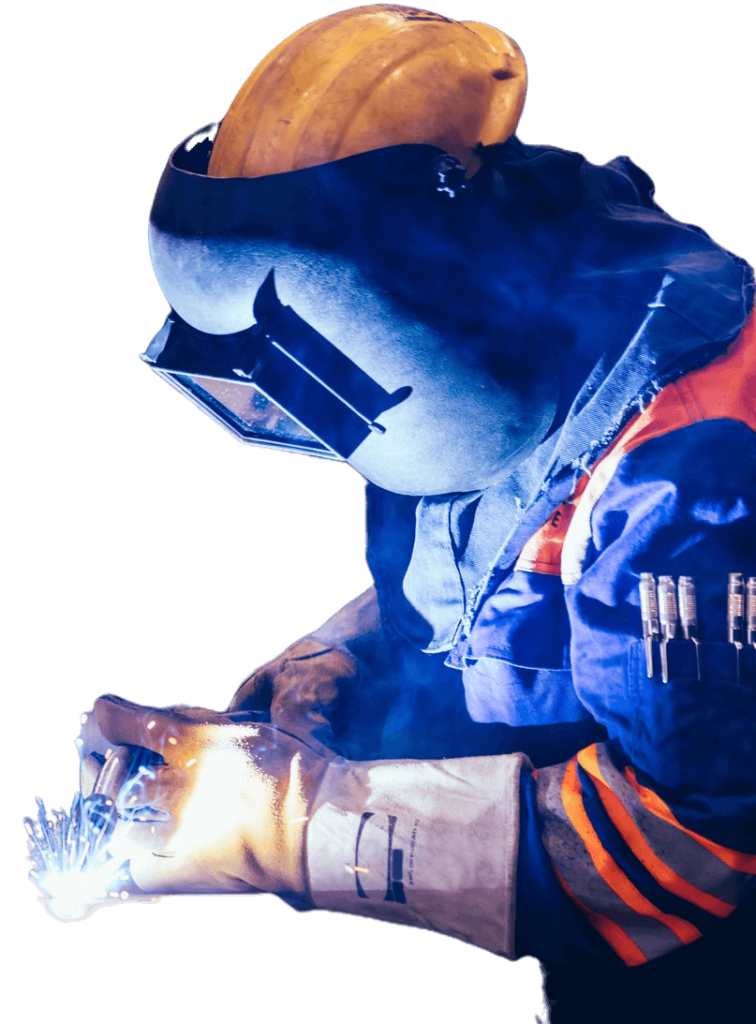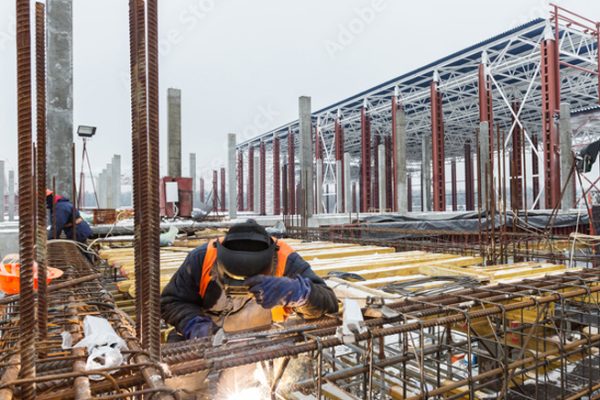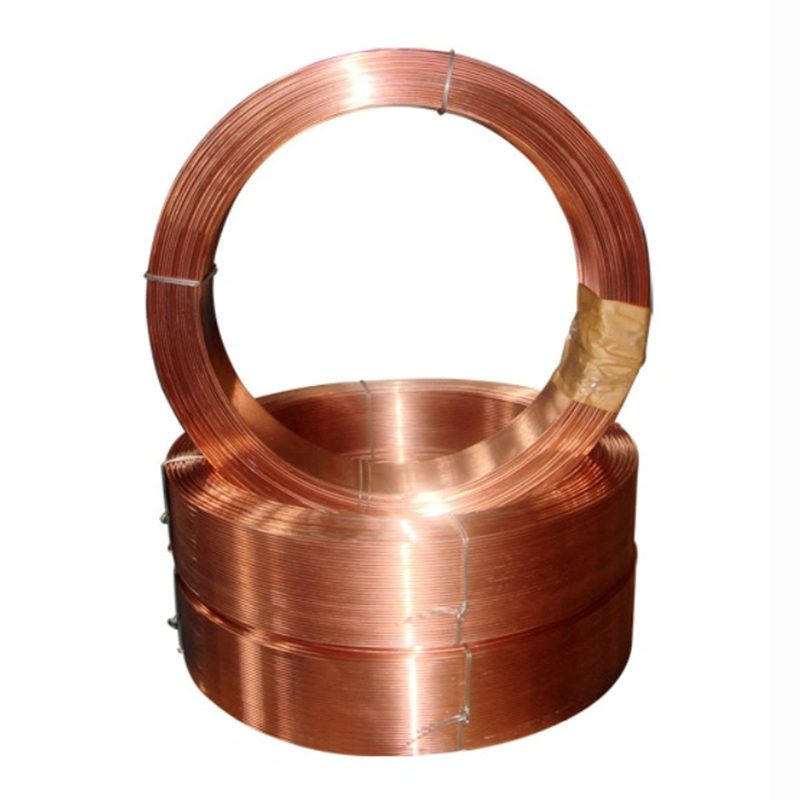
Submerged Arc Wire
WOERDE is an industrial welding consumables manufacturer that offers a wide range of welding wires. Our manufacturing facility in China produces high-quality Submerged Arc Wire for demanding industrial applications.
WOERDE also supplies various types of welding wires, including solid copper, flux-cored, stainless steel, aluminum, and copper welding wires, as well as electrodes. The Submerged Arc Wire is often used in heavy fabrication, bridge construction, and large-scale structural applications, whereas the flux-cored and other types of wires are used in diverse industrial applications.
Submerged Arc Wire belongs to the family of arc welding consumables. It is named after its use in the Submerged Arc Welding (SAW) process, where the arc is submerged beneath a blanket of granular flux to protect the weld pool from atmospheric contamination. The Submerged Arc Wire has a similar function as other types of welding wires but offers unique advantages in specific applications. The benefits of WOERDE’s Submerged Arc Wire include: consistent weld quality, high deposition rates, and efficiency in thick material welding.

All You Need To Know About Submerged Arc Wire
Submerged Arc Wire is a type of welding consumable used in the Submerged Arc Welding (SAW) process. The design of this wire, combined with a granular flux, protects the weld pool from atmospheric contamination. This makes Submerged Arc Wire suitable for both manual and automated welding processes, particularly in applications that require deep penetration and high deposition rates.
Because this type of welding wire offers consistent weld quality and efficiency in welding thick materials, industries that require heavy fabrication and large-scale structural welding operations use them very often. Additionally, many industries prefer Submerged Arc Wire as it provides a clean and slag-free weld, reducing post-weld cleaning. Submerged Arc Wire can be used in various applications, including bridge construction, shipbuilding, and pipeline fabrication.
This article provides you with everything you need to know about Submerged Arc Wire. What you’ll learn includes the uses of Submerged Arc Wire, its composition, the mechanism behind how it works, and the different types of Submerged Arc Wire available in the market. In the later end, you can check the difference between Submerged Arc Wire and other types of welding wires, such as Gas-Shielded Welding Wire or Flux Cored Welding Wire.
How Does Submerged Arc Wire Work?
Submerged Arc Wire is used in the Submerged Arc Welding (SAW) process, where the wire acts as a filler material. The wire is fed through a welding gun and into the weld pool, parallel to the workpiece, and an electric arc is established between the wire and the workpiece.
The diameter of this wire is typically matched to the thickness of the materials being welded. When the welding operation starts, the wire melts and combines with the base metal to form the weld. A granular flux is used in the process, covering the weld pool and protecting it from atmospheric contamination. As the welding continues, the wire is continuously fed, and the flux provides a consistent shield, preventing oxidation and contamination.

What Are Submerged Arc Wires Used For?
Submerged Arc Wires are used in a wide range of industries that require welding operations, particularly where thick materials are involved and a high deposition rate is beneficial. These could be the following:
- Shipbuilding Industry
- Construction Industry
- Pipeline Fabrication
- Heavy Equipment Manufacturing
- Railroad Construction
- Oil and Gas Industry
- Power Generation
- Metal Fabrication
Considerations When Buying Submerged Arc Wires
Finding the Right Wire for Your Welding Needs
01.
Welding Process Compatibility
Submerged Arc Wires are specifically designed for the Submerged Arc Welding (SAW) process. Ensure that the wire is compatible with your welding equipment and the specific requirements of your project.
02.
Material Compatibility
Different Submerged Arc Wires are formulated to weld various base metals. Selecting the right wire for the material you are welding (such as carbon steel, stainless steel, or alloy steel) is crucial for achieving the desired weld properties.
03.
Diameter and Size
Submerged Arc Wires come in various diameters and spool sizes. Choosing the correct diameter and size can affect the weld penetration, deposition rate, and overall weld quality. Consult with the manufacturer or a welding professional to find the right size for your application.
04.
Quality and Certification
Look for Submerged Arc Wires that meet industry standards and certifications. High-quality wires will provide consistent performance, reduce the risk of weld defects, and ensure compliance with relevant regulations.
Benefits of Using Submerged Arc Wires
Enhancing Welding Efficiency and Quality with Submerged Arc Wires
High Deposition Rates
Submerged Arc Wires offer high deposition rates, allowing for faster welding speeds. This can significantly reduce the time required for large-scale welding projects.
Reduced Fume Emission
The Submerged Arc Welding process with specialized wires produces fewer welding fumes compared to other methods. This contributes to a safer and more environmentally friendly working environment.
Cost-Effective Solution
By optimizing welding speed and reducing the need for rework due to defects, Submerged Arc Wires can lead to cost savings. Their efficiency and quality contribute to overall project cost reduction.
Excellent Weld Quality
These wires provide consistent and uniform welds, minimizing defects such as porosity and cracking. The result is a strong and durable weld that meets industry standards.
Versatility in Applications
Submerged Arc Wires are suitable for various industrial applications, including shipbuilding, construction, pipeline fabrication, and heavy equipment manufacturing. Their adaptability makes them a valuable asset in diverse welding scenarios.
Ease of Automation
These wires are well-suited for automated welding processes, allowing for precise control and repeatability. Automation compatibility enhances productivity and ensures consistent results across large production volumes.
Technical Specifications of Gas-Shielded Welding Wire for MIG and TIG Welding
Understanding the technical specifications of our Gas-Shielded Welding Wire for MIG and TIG welding can help you make an informed decision. Here are the key details:
| Specification | MIG Welding | TIG Welding |
|---|---|---|
| Wire Diameter | Commonly ranges from 0.8mm to 1.6mm. | Commonly ranges from 1.0mm to 3.2mm. |
| Weight | Typically sold in spools of 15kg and 20kg. | Typically sold in straight lengths of 1m, packaged in 5kg or 10kg boxes. |
| Chemical Composition | Composed of a steel core and additional alloying elements. Exact composition can vary based on the specific type of wire. | Similar to MIG, but may have slightly different alloying elements to suit the TIG process. |
| Mechanical Properties | Offers excellent tensile strength, yield strength, and elongation properties. Specific values can vary based on the type of wire and welding conditions. | Similar to MIG, but may have slightly different properties due to the different welding process. |
| Shielding Gas | Typically used with a mixture of Argon and Carbon Dioxide gases. The exact mixture can vary based on the material being welded. | Typically uses pure Argon as the shielding gas. |
Please note that the exact specifications can vary based on the specific type of Gas-Shielded Welding Wire and the welding conditions. Always refer to the product data sheet or consult with our technical team for the most accurate and up-to-date information.
Safety and Handling Instructions for Submerged Arc Wires
Using Submerged Arc Wires safely and effectively requires understanding and following certain guidelines
01.
Proper Welding Technique
Utilize the correct welding parameters, including current, voltage, and travel speed. Ensure that the flux is evenly distributed to avoid slag inclusions and other defects.
02.
Correct Wire Feeding
The wire should be fed at a consistent rate, matching the melting rate. Improper feeding can lead to irregularities in the weld bead and potential defects.
03.
Storage of Welding Wire and Flux
Store Submerged Arc Wires and flux in a clean, dry area. Moisture exposure can lead to poor weld quality. Seal opened flux bags and store wires properly to prevent contamination.
04.
Training and Certification
Seek professional guidance or certification if you are new to Submerged Arc Welding to ensure quality and safety.
05.
Safety Equipment and Ventilation
Utilize appropriate safety gear, including helmets, gloves, and protective clothing. Submerged Arc Welding may produce fumes that require proper ventilation or fume extraction systems.
06.
Flux Handling and Quality Control
Implement proper flux handling systems and regular inspection of the weld, including visual inspection and non-destructive testing, to ensure that the weld meets the required standards.
Remember, safety and quality should always be your top priorities when working with Submerged Arc Wires. Always adhere to manufacturer guidelines and industry best practices.
Request Your Free WOERDE Welding Wire Sample
Experience WOERDE’s superior welding wires firsthand. Fill out our online form to request a free sample today. Discover why global businesses trust WOERDE.



